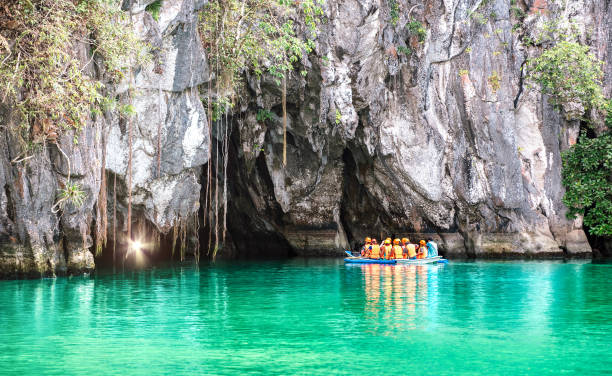Subterranean Sojourns: Exploring the World's Underground Cities
Venture beneath the surface and discover a hidden realm of human ingenuity and history. Underground cities, carved into rock or built deep within the earth, offer a fascinating glimpse into our past and present. These subterranean marvels, often overlooked by traditional travelers, provide a unique and immersive experience that challenges our perception of urban landscapes. From ancient cave dwellings to modern underground complexes, these hidden worlds are waiting to be explored by the adventurous traveler.

Similarly, the Berbers of Tunisia carved troglodyte dwellings into the arid landscape, creating the underground village of Matmata. These subterranean homes provided protection from the scorching desert heat and remain inhabited to this day, offering visitors a glimpse into a unique way of life that has endured for centuries.
Modern Marvels: Contemporary Underground Cities
While many underground cities have ancient roots, the concept has evolved to meet modern needs. In Helsinki, Finland, the Itäkeskus Swimming Hall is just one part of an extensive underground network that includes shopping centers, data centers, and even a go-kart track. This subterranean infrastructure not only maximizes space in the crowded urban environment but also provides protection from harsh winter conditions.
Montreal’s Underground City, known as RESO, is a vast network of interconnected office towers, shopping malls, hotels, and metro stations. Spanning over 32 kilometers, this climate-controlled underground complex allows residents and visitors to navigate the city without braving the cold Canadian winters.
The Strategic Importance of Underground Complexes
Beyond civilian use, underground cities have played crucial roles in military and government operations. In Beijing, the Underground City, or Dixia Cheng, was constructed in the 1970s as a massive bomb shelter. Although no longer used for its original purpose, parts of the complex are open to tourists, offering a fascinating look into Cold War-era paranoia and engineering.
In the United States, the Cheyenne Mountain Complex in Colorado Springs serves as a military installation built into the mountain. This self-contained underground city can operate independently for extended periods, highlighting the strategic importance of subterranean construction in national defense.
Sustainable Living: The Future of Underground Architecture
As urban populations grow and environmental concerns mount, underground construction is gaining attention as a sustainable solution. In Mexico City, the BNKR Arquitectura firm has proposed the Earthscraper, an inverted skyscraper that would burrow 65 stories into the ground. This innovative design aims to preserve the city’s historic central square while providing much-needed space for residential and commercial use.
Similarly, the Underground Science City in Singapore is a planned facility that will house research laboratories and data centers beneath the earth’s surface. This project not only maximizes land use in the space-constrained city-state but also provides natural insulation, reducing energy costs for cooling in the tropical climate.
The Traveler’s Guide to Subterranean Exploration
For those eager to embark on their own underground adventure, careful planning and research are essential. Many underground cities and complexes offer guided tours, providing historical context and ensuring visitor safety. When exploring less developed sites, it’s crucial to hire experienced local guides and adhere to all safety regulations.
Illuminating Facts About Underground Cities
• The underground city of Naours in France served as a refuge during both World Wars and contains over 3 kilometers of galleries.
• In Coober Pedy, Australia, over half the population lives underground to escape extreme temperatures.
• The Lost World Caverns in West Virginia features a vast underground chamber large enough to fit a 15-story building.
• Seattle’s underground city was created when the streets were elevated after the Great Fire of 1889, leaving the ground floors of buildings below the new street level.
• The Wieliczka Salt Mine near Krakow, Poland, features an underground cathedral carved entirely out of rock salt.
As we continue to push the boundaries of urban development and seek innovative solutions to environmental challenges, underground cities represent a fascinating frontier in architecture and urban planning. These subterranean wonders offer not just a glimpse into our past, but also a potential blueprint for sustainable future living. For the intrepid traveler, exploring these hidden realms provides a unique adventure and a new perspective on human ingenuity and adaptability.






